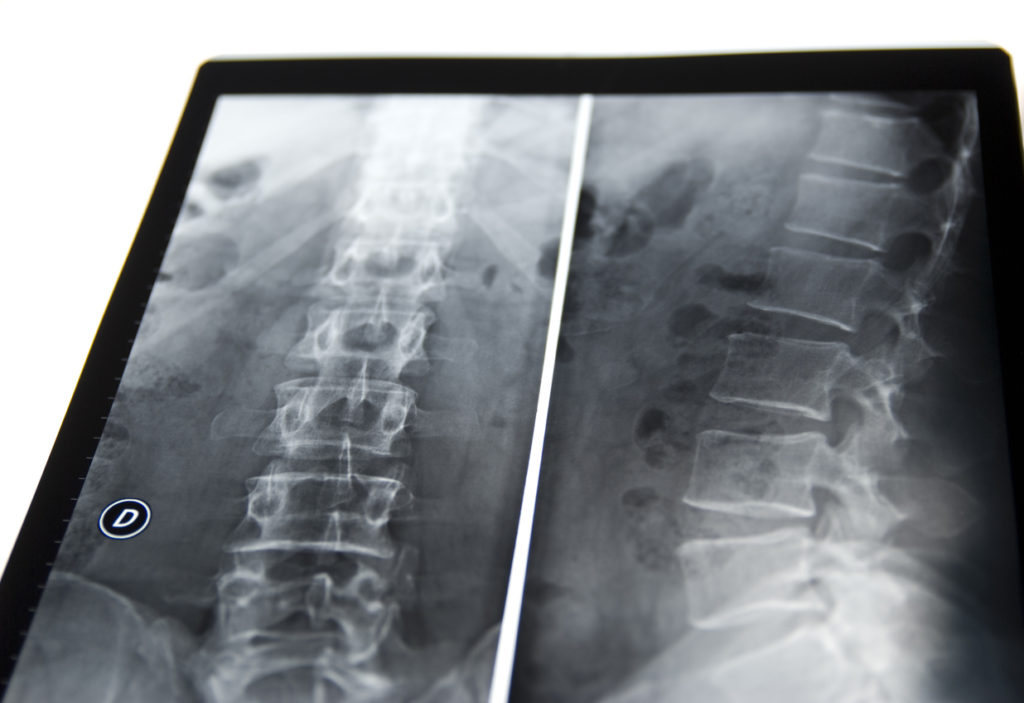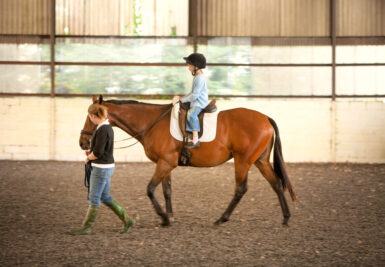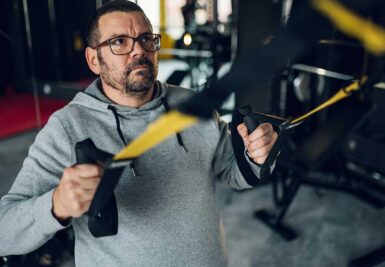THIS IS PART OF THE ULTIMATE GUIDE TO SCOLIOSIS
Kyphosis—also referred to as a hunchback, flat back, round back or gibbus spine deformity—is an excessive curve of the spine.
Kyphosis is noticeable when looking at someone from the side and results in an exaggerated rounding of the upper back. There is normally a gentle curve, but with kyphosis, the spinal curve is excessive.
Read on to learn more about the different types of kyphosis and treatment options available, including surgery.
Spine anatomy
The spine is made up of 24 bones, called vertebrae, which are stacked on top of one another. These bones connect to protect the spinal cord and form the natural curves of your back.
The seven small vertebrae that begin at the base of the skull and form the neck comprise the cervical spine.
Your spinal cord and nerves travel through the spinal canal carrying messages between your brain and muscles. The intervertebral discs between your vertebrae are flexible, flat and round discs and are about a half-inch thick. They act as shock absorbers when you walk or run and allow motion between the vertebrae.
The natural spine curvature allows us to stand upright and the curves should balance each other. The cervical and lumbar spine is balanced in lordosis (excessive inward curvature of the spine).
The thoracic spine is balanced in kyphosis. Together, the curves balance each other into an “S” shape. If there is too much kyphosis, or alternately, not enough lordosis, our posture is pitched forward, with abnormal appearance, abnormal body posture and mechanics resulting in increased work needed to stand upright.
Types of kyphosis
There are several different forms of kyphosis, including:
Postural kyphosis
Posture is easily correctable by just changing positions. Long-term solutions include parental and peer coaching, self-awareness, training with full length mirrors and sometimes physical therapy.
There is no medical evidence that shows “bad postures” are associated with future adult problems.
Scheuermann’s kyphosis
This is a stiff, fixed and rigid deformity and the most common adolescent kyphosis deformity. Because it’s a true deformity it is not correctable simply with changes in posture. In other words, a teenager with the condition can’t simply “stand up straight” when asked.
Scheuermann’s kyphosis is a growth disturbance of the vertebrae where three or more vertebrae grow wedge-shaped in the front of the spine rather than rectangle-shaped.
Mild to moderate cases are very common and may not require any treatment. The condition becomes more severe after 75 degrees.
Unlike scoliosis (spine curve when looking at the patient from the back), Scheuermann’s kyphosis can progress even as an early adult. Interventions for more severe Scheuermann’s kyphosis may include a brace or surgery.
Congenital kyphosis
This stiff, rigid and fixed spine deformity is noticeable at six to eight years and sometimes earlier. The child is born with malformed bones or there is a bone bar that tethers the vertebrae, preventing normal growth. Surgery is commonly recommended for this type of congenital deformity, which may be progressive and disfiguring.
Post-traumatic kyphosis (PTK)
This stiff, rigid and fixed deformity occurs after a vertebrae fracture from major trauma such as a car accident, sudden fall, or from the common osteoporotic vertebrae fractures in the elderly. Treatments may include brace, surgery or bone cement injection (kyphoplasty), especially in the elderly who may not tolerate surgery.
Pathologic fracture
This stiff, rigid and fixed deformity may result from radiation therapy to treat bone tumors, or as a result of bone tumors which weaken the vertebrae enough to fracture.
Post laminectomy
Post laminectomy may result from necessary spine laminectomy microsurgery, especially when necessary to remove spinal cord tumors in the growing child.
Dwarfism
This is a stiff, rigid and fixed deformity associated with more rare types of skeletal dwarfism.
Symptoms
Symptoms of kyphosis include:
- Mild back pain
- Rounded shoulders
- Visible hump on the back
- Spine stiffness
- Fatigue
- Tight hamstrings
- Loss of sensation
- Weakness or numbness in the legs
- Shortness of breath
Physician examination
Kyphosis is often noticed when screening for scoliosis in children at school, which causes a parent to make an appointment with a spine specialist for their child.
To determine whether your child has kyphosis, your physician will ask you for a complete medical history, have your child describe symptoms and conduct a physical examination.
The physical examination will include having the child bend forward with both feet together, knees straight and arms hanging free. An X-ray or MRI is usually necessary to confirm the diagnosis.
Make an appointment with a spine specialist
Kyphosis treatment
Treatments may include a series of X-rays to document progression or spontaneous stabilization of the deformity, back brace or surgery.
The decision for surgery depends on the patient’s age, the expected progression of the deformity, the amount of deformity, the risk of nerve damage if left untreated, knowledge of the patient’s overall health, and the quality of vertebral bone or presence of osteoporosis.
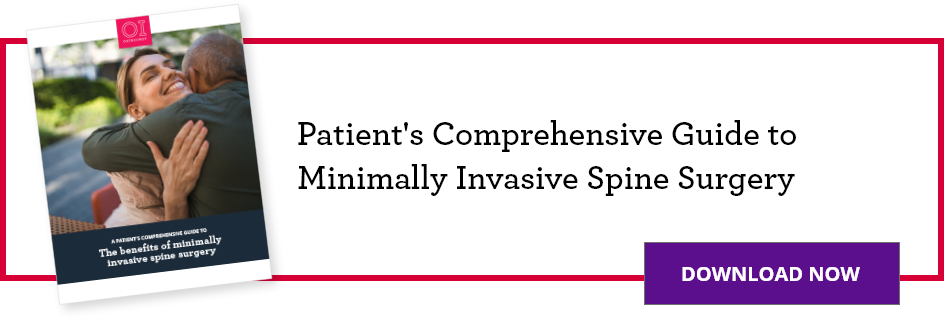
Poor bone quality, chronic obstructive pulmonary disease (COPD), respiratory or heart problems, or poor overall health may not allow the patient to undergo surgery.
Surgery is tailored to the individual needs of the patient and may include one of many types of bone vertebral bone stabilizing surgeries. This may include surgery from the front of the spine, the back of the spine or from the side of the spine. Most commonly, surgery from the front and back of the spine may be recommended.
An osteotomy may be recommended for severe deformity. With an osteotomy, the vertebral bone is cut and reset to the normal angle and then stabilized in the corrected position with spine rods.
Modern spine rods are made from either titanium or cobalt chrome alloy. These rods are MRI-safe. Additionally, modern spine rods will not set off airport metal detectors.
Learn more about OrthoIndy spine treatments
Recovery
In early diagnosis, kyphosis is treated successfully without surgery and children lead active and healthy lives. If left untreated, curve progression could lead to pain or problems during adulthood.
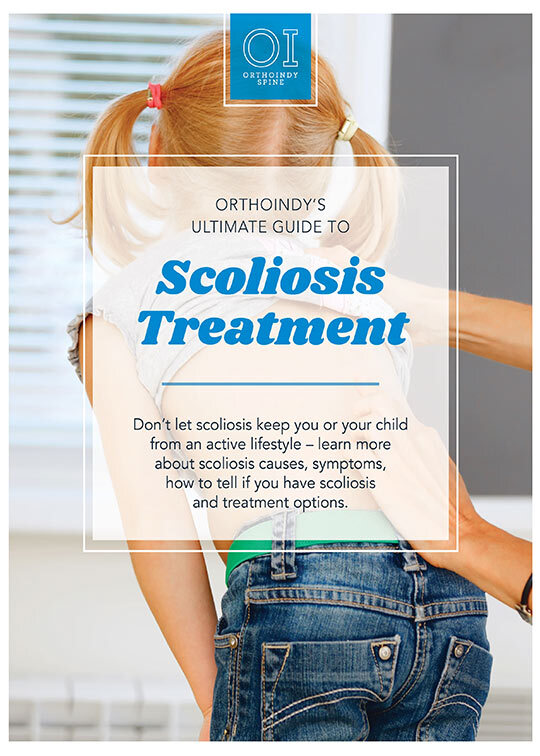
Get the Ultimate Guide to Scoliosis Treatment
Whether you’re just beginning to research scoliosis or have already made the decision to have scoliosis back surgery, our comprehensive guide gives you answers to common questions about scoliosis and examples of real patient success stories.


